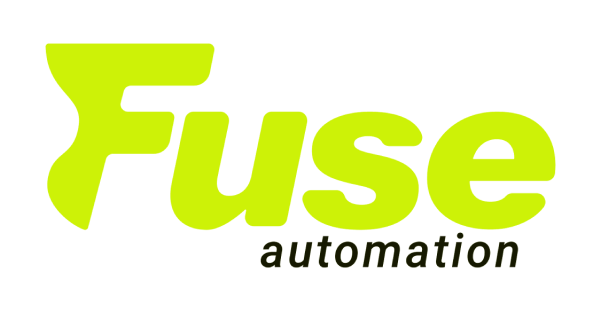How COBOTS are Changing the Future?
In today’s rapidly evolving technological landscape, COBOTS (collaborative robots) stand at the forefront of innovation, reshaping industries and redefining the future of work. Their emergence marks a paradigm shift in automation, where human-machine collaboration fosters unprecedented efficiency, safety, and productivity. Here’s how COBOTS are revolutionizing the future:
Redefining Work Dynamics:
- COBOTS are transforming traditional notions of labor by augmenting human capabilities rather than replacing them.
- They enable humans and robots to work side by side, leveraging each other’s strengths to accomplish tasks more efficiently.
- This collaborative approach fosters a dynamic work environment where humans focus on high-level decision-making and problem-solving, while COBOTS handle repetitive or physically demanding tasks.
Enhancing Efficiency and Productivity:
- COBOTS excel in repetitive and tedious tasks, executing them with precision and consistency.
- By automating routine processes, COBOTS streamline production lines, reduce cycle times, and increase overall operational efficiency.
- Their ability to work tirelessly without breaks or fatigue ensures continuous production, leading to higher output and improved productivity levels.
Ensuring Workplace Safety:
- Unlike traditional industrial robots that operate behind safety barriers, COBOTS are designed to work alongside humans in collaborative environments.
- Equipped with advanced sensors and safety features, COBOTS can detect human presence and adjust their speed or force to prevent accidents.
- This enhanced safety enables closer human-robot interaction, minimizing the risk of injuries and creating a safer working environment for all.
Facilitating Innovation and Customization:
- COBOTS empower businesses to innovate and customize their products and processes with greater flexibility.
- Their modular designs and easy reprogramming capabilities allow for rapid adaptation to changing production needs and market demands.
- DemoBusinesses can experiment with new ideas, iterate quickly, and bring innovations to market faster with the support of COBOT technology.
Democratising Automation:
- COBOTS are democratising access to automation technologies, making them more accessible to businesses of all sizes.
- Unlike traditional industrial robots that require significant investment and expertise to implement, COBOTS are more affordable, user-friendly, and adaptable.
- Small and medium-sized enterprises (SMEs) can now leverage COBOTS to improve their competitiveness, drive growth, and remain agile in a rapidly changing business landscape.
Fostering Collaboration and Learning:
- COBOTS promote collaboration between humans and machines, fostering a culture of continuous learning and skill development.
- Workers have the opportunity to interact with and learn from COBOTS, acquiring new skills in robotics programming, maintenance, and operation.
- This collaborative learning environment not only enhances individual capabilities but also prepares the workforce for the evolving demands of the digital age.
Can I Afford a COBOT?
Affording a COBOT depends on various factors such as your budget, the specific needs of your business, and the potential return on investment (ROI) that a COBOT could provide. Here are some considerations to help you determine if you can afford a COBOT:
- Cost of COBOT
- COBOTS come in various sizes, configurations, and price ranges. Basic models may start from a few thousand dollars, while more advanced or larger COBOTS can range into tens of thousands of dollars.
- Evaluate your budget and research different COBOT options to find one that fits within your financial resources.
- Return on Investment (ROI):
- Consider the potential return on investment (ROI) that a COBOT could offer your business.
- Calculate the cost savings from increased productivity, reduced labor costs, minimized downtime, and improved product quality that a COBOT could generate over time.
- Determine how long it would take for the savings generated by the COBOT to offset its initial cost.
- Financial Assistance and Incentives:
- Research whether there are any financial assistance programs, grants, or tax incentives available to help offset the cost of purchasing a COBOT.
- Some governments and organizations offer support to encourage businesses to invest in automation technologies, including COBOTS.
- Leasing or Financing Options:
- Explore leasing or financing options offered by COBOT manufacturers or third-party financial institutions.
- Leasing allows you to acquire a COBOT with lower upfront costs and spread the payments over time, making it more manageable for your budget.
- Financing options provide flexibility in paying for the COBOT, allowing you to preserve capital for other business needs while still benefiting from automation.
- Operational Costs:
- In addition to the initial cost of purchasing a COBOT, consider ongoing operational expenses such as maintenance, training, and software updates.
- Factor these costs into your budget to ensure that you can afford not only the initial investment but also the long-term expenses associated with owning a COBOT.
- Scalability and Customization:
- Consider the scalability of COBOT solutions. You may start with a single COBOT and gradually expand your automation capabilities as your business grows.
- Some COBOTS offer modular designs or add-on features that allow for customization and expansion to meet evolving needs, providing flexibility within your budget constraints.
By carefully evaluating these factors and conducting a cost-benefit analysis, you can determine whether you can afford a COBOT and whether it makes financial sense for your business. While the initial investment may require careful budgeting, the potential benefits in terms of increased efficiency, productivity, and competitiveness can make it a worthwhile investment for the future success of your business.
